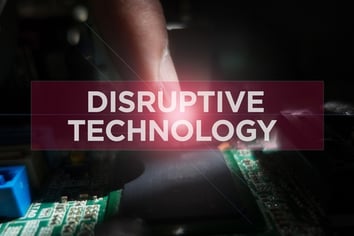 The term “disruptive,” when applied to business in general and technology in particular, has become something of a buzzword since its original coinage by Harvard Business School professor Clayton Christiansen in the 1990s. Companies in all industries now claim to provide “disruptive” technologies or apply “disruptive” business models or processes.
The term “disruptive,” when applied to business in general and technology in particular, has become something of a buzzword since its original coinage by Harvard Business School professor Clayton Christiansen in the 1990s. Companies in all industries now claim to provide “disruptive” technologies or apply “disruptive” business models or processes.
With all that disruption going on, don’t you think someone would notice?
The fact is, “disruptive” is in danger of devolving from a useful description to marketing fluff. So while there’s still time—before the term has finally been squeezed of all meaning—let’s give it a closer look.
The Textbook Definition
Christiansen’s original definition is actually somewhat dry: Disruptive innovation is “a process by which a product or service takes root initially in simple applications at the bottom of a market and then relentlessly moves up market, eventually displacing established competitors.” Disruptive innovation is distinguished from sustaining innovation, or incremental improvements to established technology.
Not nearly as exciting, on its face, as the marketing types would have you believe, right? Let’s review some disruptive technologies that meet this definition.
- Personal computers: PCs rendered typewriters (and typewriter ribbon, carbon paper, and correction fluid) obsolete, not to mention adding machines and handwritten ledger books.
- The automobile: This contraption eventually put horse farms, stablehands, pooper-scoopers, and buggy-whip makers out of business.
- Email: This technology made sending letters by postal mail largely a thing of the past.
Notice something about these examples? None of them were intended to be as disruptive as they became. Steve Jobs and Bill Gates didn’t set out to upend the Remington typewriter company. Otto Benz and Henry Ford didn’t have a vendetta against the horse-and-buggy industry. And the developers of the original email protocols didn’t intend to make the U.S. Postal Service an even bigger money-loser than it already was.
The Characteristics of Disruptive Technologies
You see, disruptiveness of an innovation is often accidental—the desire to solve one isolated problem leads to an innovation that ends up rendering a product, process, technology, company, or an entire industry obsolete, sometimes practically overnight. By way of additional examples:
- Craig Newmark’s innovation—Craigslist, a website that enables users to post classified advertisements, complete with photos, for free—pretty much destroyed the newspaper industry’s business model, by making newspaper classifieds obsolete. This thereby eliminated what was once a major portion of print journalism’s revenue stream.
- By enabling users to watch unlimited movies and TV shows on demand with a click of the remote, Netflix severely reduced the demand for the neighborhood video store. Bye, bye, Blockbuster. Netflix (and streaming media in general) is also putting the squeeze on cable and satellite TV by forcing them to rethink their business and pricing models.
- Apple may or may not have been trying to knock Research in Motion’s Blackberry off its pedestal as the ultra-cool, must-have personal digital device, but that’s exactly what the iPhone did.
From these examples, you might think that with disruptive technologies, someone has to lose. However, that’s not always the case: Streaming music and MP3s displaced compact discs, just as compact discs displaced LP records and cassette tapes. But Sanyo, Pioneer, Alpine, and other electronics makers, by and large, were able to anticipate these changes and adapt accordingly. Digital video recorders and DVDs supplanted videocassettes, but Sony and RCA managed to stay in business.
How to Lose at Disruption
But often there are losers; these are the companies that refuse to recognize a disruptive innovation for what it is or take steps to adapt. Once-mighty Kodak relied on chemical photography far too long and has been only a minor player in digital photography. Research in Motion thought the Blackberry’s dominance was here to stay, and now is a shadow of its former self. Newspapers never saw Craigslist coming, and never thought that one website could lop off a huge chunk of their advertising revenue. Blockbuster and Hollywood Video are no more.
Aspiring Disruptors: Walk the Walk First
In any case, whether your company is a startup or established, it’s premature to call your technology “disruptive” before it has actually disrupted something. This can be hard to predict, and you can’t just will it to happen. The business world is littered with technologies that their backers claimed to be “disruptive,” but turned out to be just another neat idea that nobody wanted. Better to focus your energy and resources on solving the problem at hand, than to crow about disruption that may never materialize.
If you have an idea for a software product or technology that you think is potentially disruptive, we at AndPlus will be happy to help make it a reality. And we promise not to call it “disruptive” until it clearly meets the definition.

















